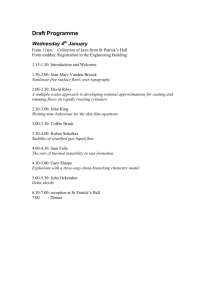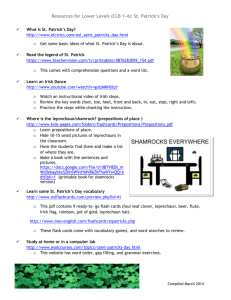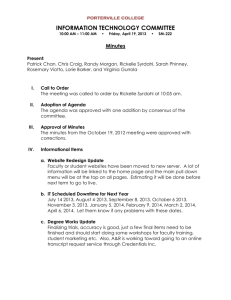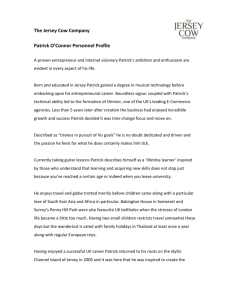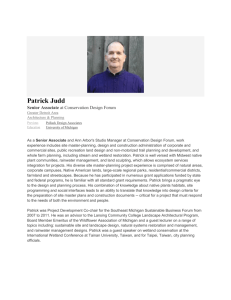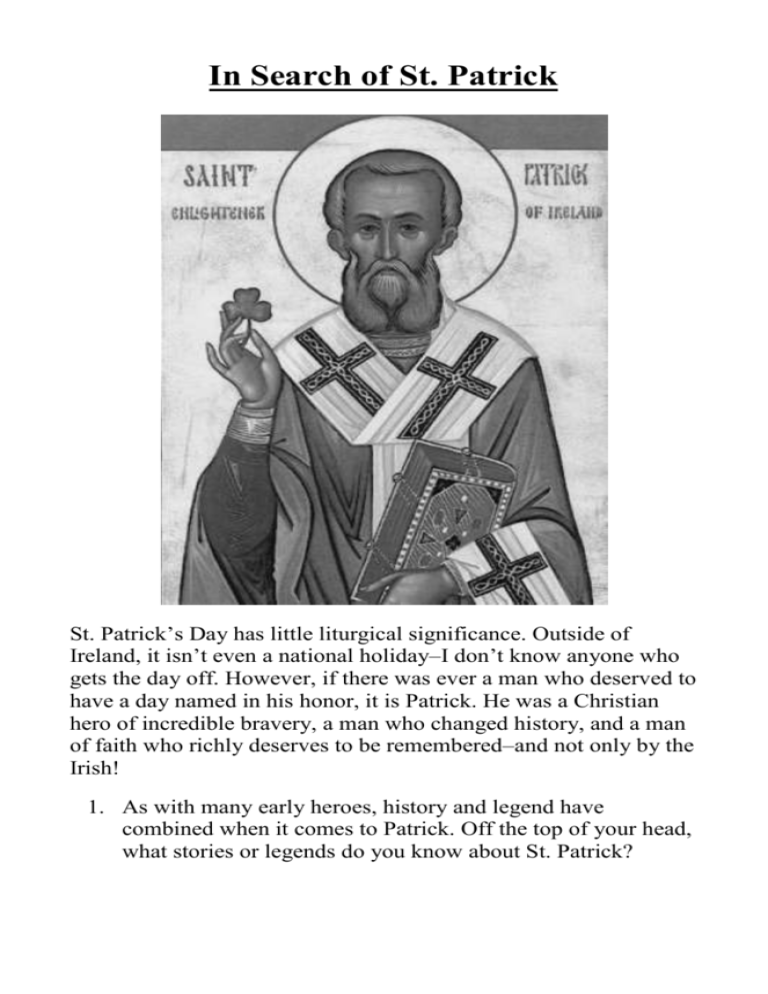
In Search of St. Patrick
St. Patrick’s Day has little liturgical significance. Outside of
Ireland, it isn’t even a national holiday–I don’t know anyone who
gets the day off. However, if there was ever a man who deserved to
have a day named in his honor, it is Patrick. He was a Christian
hero of incredible bravery, a man who changed history, and a man
of faith who richly deserves to be remembered–and not only by the
Irish!
1. As with many early heroes, history and legend have
combined when it comes to Patrick. Off the top of your head,
what stories or legends do you know about St. Patrick?
From his own few writings we know he was born near the end of
the fourth century in Britain, an outpost of the crumbling Roman
Empire. It was a terrible time in the western world. Many
Christians believed the end of the world was near. The imperium
was disintegrating, and along with it the settled, ordered way of
Roman life.
Decades of defensive warfare against a thousand foes along the
empire’s vast perimeter had consumed soldiers and resources at a
rate impossible to maintain. Internal strife and corruption had
further destabilized the great empire. Rome was slowly shrinking,
drawing its troops inward to more defensible positions, and leaving
remote provinces and colonies perilously isolated. Britain was such
an orphaned outpost, without real protection from blood-thirsty
raiders who swept in from the sea to rob, rape, pillage and kidnap
children for slaves.
These raiders were the Irish–members of the same fierce Celtic
race that had, in earlier decades, confronted Roman troops and
fought them to a standstill on the borders of Roman Britain. In
those days they had fought naked with their bodies painted in vivid
colors. To the civilized Romans they were frightening savages with
modern swords, shields and other weapons.
The Irish made jewelry and tableware from the bones of their
victims, and they worshiped horrible, murderous monster gods.
They practiced human sacrifice and were accused of cannibalism
by the Romans, who never conquered them or their neighbors, the
Picts. Instead, the Roman army steered clear of these natives and
built sturdy walls across Britain in an effort to keep them at bay.
3. Read Psalm 46:(1-3, 9-11). What is the Christian’s hope?
Page
2
2. In the history of the church (Old and New Testament), is
this the first time Christians faced savage enemies that
threatened their life? Can you give an example?
One of the unfortunate children stolen in a raid by these Irish
warriors was Patrick, a Christian Roman boy dragged off one dark
night, along with his two sisters, and carried across the sea to the
remote mountains of Ireland. He was sold to be a shepherding
slave. He was forced to live in horrible conditions, often hungry,
often cold, threatened by the elements, and abused by his captors.
Patrick survived, though, and over the years, he learned the
language of the Irish and their ways.
4. Name some other Biblical figures who were carried off into
slavery in a foreign land. How did God use this for good?
During his six years in bondage Patrick prayed and meditated. One
day, he tells us, God sent him a surprising vision in a dream. He
was to go to a certain harbor, where a boat would be waiting to
take him home to Britain. He believed the message, walked to the
harbor, and events happened as he had been told. Now a young
man, Patrick was free and at home with his parents once again!
Page
According to tradition and to the stories passed down to us, in
about the year 432 Patrick and a small band landed their boat in
Ireland and, singing a hymn for divine protection, proceeded
inland…. Eventually, Patrick arrived at the court of King
Leoghaire at Tara, where Druid priests displayed their demonic
magic, theatrically plunging the hall into darkness. Instead of
cowering in fright, Patrick observed aloud that these priests could
create darkness but that they could not dispel it–which they could
not. He then proceeded to use this incident as the theme of a
sermon, in which he likened Christ to the light. Many of the
3
He spent only a short time with his family, for he received another
message, in another dream. Patrick tells us this dream was vivid
and startling. He was to return to Ireland, the land from which he
had just escaped, not as a slave, but as a minister of God. The Lord
had chosen Patrick, he believed, to turn the Irish from their Druidic
paganism to Christ.
assembled nobles converted to Christianity that day, and Patrick
gained the king’s respect and protection.
Patrick often faced certain death unafraid. He argued, preached and
brought Christ with him everywhere he traveled. In his path he left
converts and churches under construction. In about the time it took
Patrick to walk across it, Ireland converted from paganism to
Christianity. Ireland outlawed slavery and stopped raiding its
neighbors.
5. Read Romans 6:22-23 and 12:12. How does this explain
the change of Ireland’s ways?
One of the legends that is associated with St. Patrick is that he
drove all the snakes from the Green Isle. There may be a grain of
truth in that for that's exactly what Patrick did: not driving out
snakes but casting out THE snake, the devil, by the preaching of
the Gospel.
6. Read Matthew 16:18. Why did Patrick enjoy such great
success in his evangelism to Ireland?
Where that Good News is preached, the devil must run away in
fear. Where Christ is proclaimed, death cowers in fear for a
change. Where Jesus, who died and rose, is preached, sin is put to
flight and cannot harm.
Page
A few years after Patrick’s death, Germanic barbarians sacked the
city of Rome, burned books, tore down buildings, melted priceless
artifacts, and dragged the western world into the Dark Ages.
Western civilization was almost lost, but the Irish, on their island
beyond the reach of the barbarians, remained a bastion of
Christianity and learning. Irish monks sought out, copied and
4
Afterwards
protected the few manuscripts that survived the barbarian
onslaught on the continent. They protected not only Christian
manuscripts, but influenced by Patrick’s love of literature and
history, copied and maintained secular and pagan literature as well.
Thanks to their efforts, we have the Illiad of Homer, the lectures of
Cicero, and a thousand other cultural wonders that might otherwise
have vanished. For centuries, Irish monks preserved our western
heritage for us.
It was also Irish missionaries, following in Patrick’s footsteps, who
risked their lives to bring the Gospel to those barbarians who had
conquered Rome and spread across Europe–the Germans. Along
with Christianity, Irish monks brought the same gifts to these
barbarians that Patrick had carried to them not so many decades
before: art, literature, learning and a new way of life.
The Church Today
The text of “I Bind unto Myself Today,” [Lutheran Service Book
604], is attributed to St. Patrick. This beautiful prayer, traditionally
called “St. Patrick’s Breast-Plate,” is supposed to have been
composed by Patrick in anticipation of his victory over paganism.
The translation of the prayer in [Lutheran Service Book] from the
old Irish text is a paraphrase by Cecil F. Alexander [1818-95].
Page
I bind unto myself today
The strong name of the Trinity
By invocation of the same,
The Three in One and One in Three.
5
The “Apostle of Ireland,” as Patrick is sometimes called, is also
associated with the shamrock, a plant sacred to the Druids, to
explain the Trinity. Preaching in the open air, Patrick is said to
have plucked a shamrock from the grass growing at his feet and
showed it to his listeners as an illustration of the Father, Son and
Holy Spirit. “I Bind unto Myself Today” also deals with the topic
of the Holy Trinity.
I bind this day to me forever,
By pow’r of faith, Christ’s incarnation,
His Baptism in the Jordan River,
His cross of death for my salvation,
His bursting from the spiced tomb,
His riding up the heavn’ly way,
His coming at the day of doom,
I bind unto myself today.
I bind unto myself today
The pow’r of God to hold and lead,
His eye to watch, His might to stay,
His ear to hearken to my need,
The wisdom of my God to teach,
His hand to guide, His shield to ward,
The Word of God to give me speech,
His heavn’ly host to be my guard
Against the demon snares of sin,
The vice that gives temptation force,
The natural lusts that war within,
The hostile foes that mar my course;
Or few or many, far or nigh,
In ev’ry place and in all hours,
Against their fierce hostility,
I bind to me those holy pow’rs.
Page
7. Read Matthew 28:19. What command does Jesus give?
6
I bind unto myself the name,
The strong name of the Trinity
By invocation of the same,
The Three in One and One in Three,
Of whom all nature has creation,
Eternal Father, Spirit, Word.
Praise to the Lord of my salvation;
Salvation is of Christ the Lord!
We are reborn as children of God in Baptism, receiving the
washing of water and the Word, which brings the forgiveness of
sins through the Spirit.
8. According to Scripture and this hymn, what does Baptism
bring that is received by faith?
So, we should give a bit of honor to Patrick, a Romanized Briton
who began his letters, “I, Patrick, a sinner . …” He was a man who
trusted God and became a powerful witness for the Lord. By
Patrick, as by all preachers, the Lord brought sinners into His
kingdom and rescued them from the kingdom of the evil one. By
Patrick, as by all His faithful preachers, Jesus has come and saved
sinners. Thanks be to God for St. Patrick and all pastors who
faithfully preach and teach Jesus to us! In the Name of Jesus.
Amen.
Page
Study questions not included in the original text.
7
Citations:
About the author (historical): A physicist and writer, John
Murphy Ball is a member of Ascension Lutheran Church,
Huntsville, Ala. This story appeared originally in the March 1999
Lutheran Witness. LCMS congregations may reprint for parish use.
All other rights reserved. Text copyright © 1999 by John Murphy
Ball. Hymn stanzas for “I Bind unto Myself Today” (LSB 604):
public domain.

